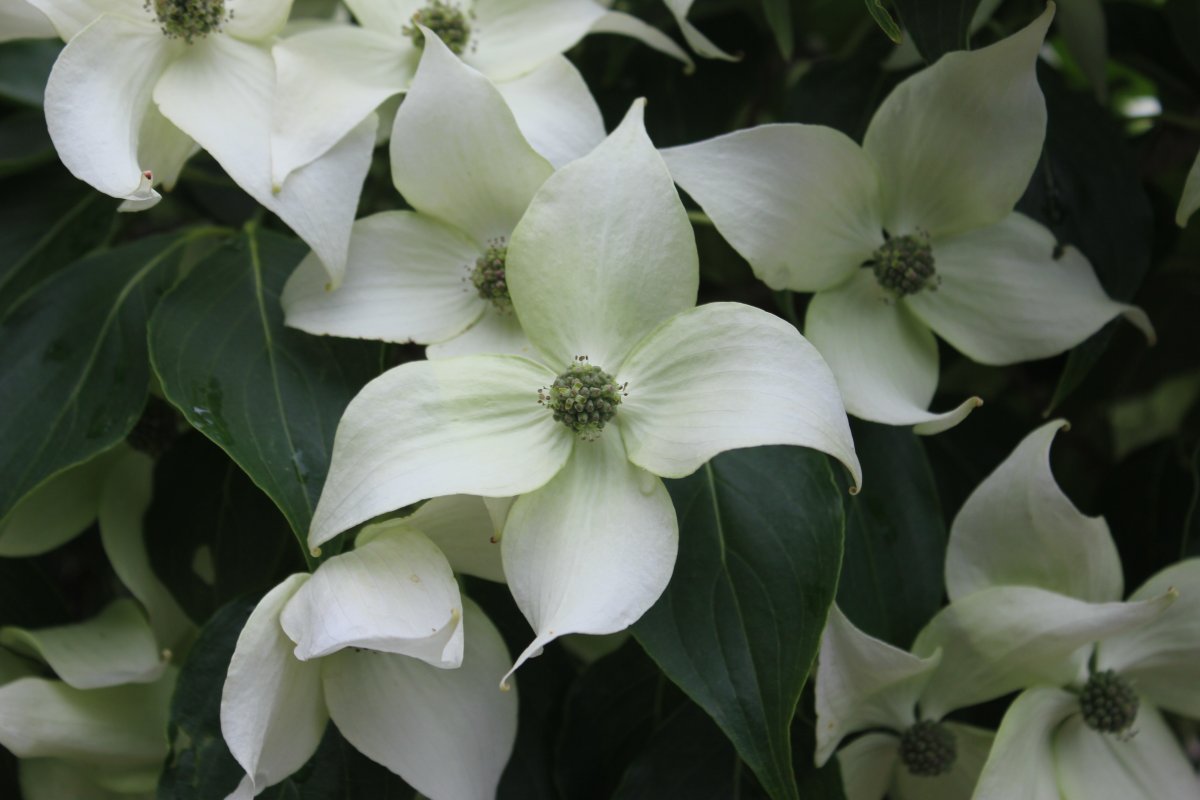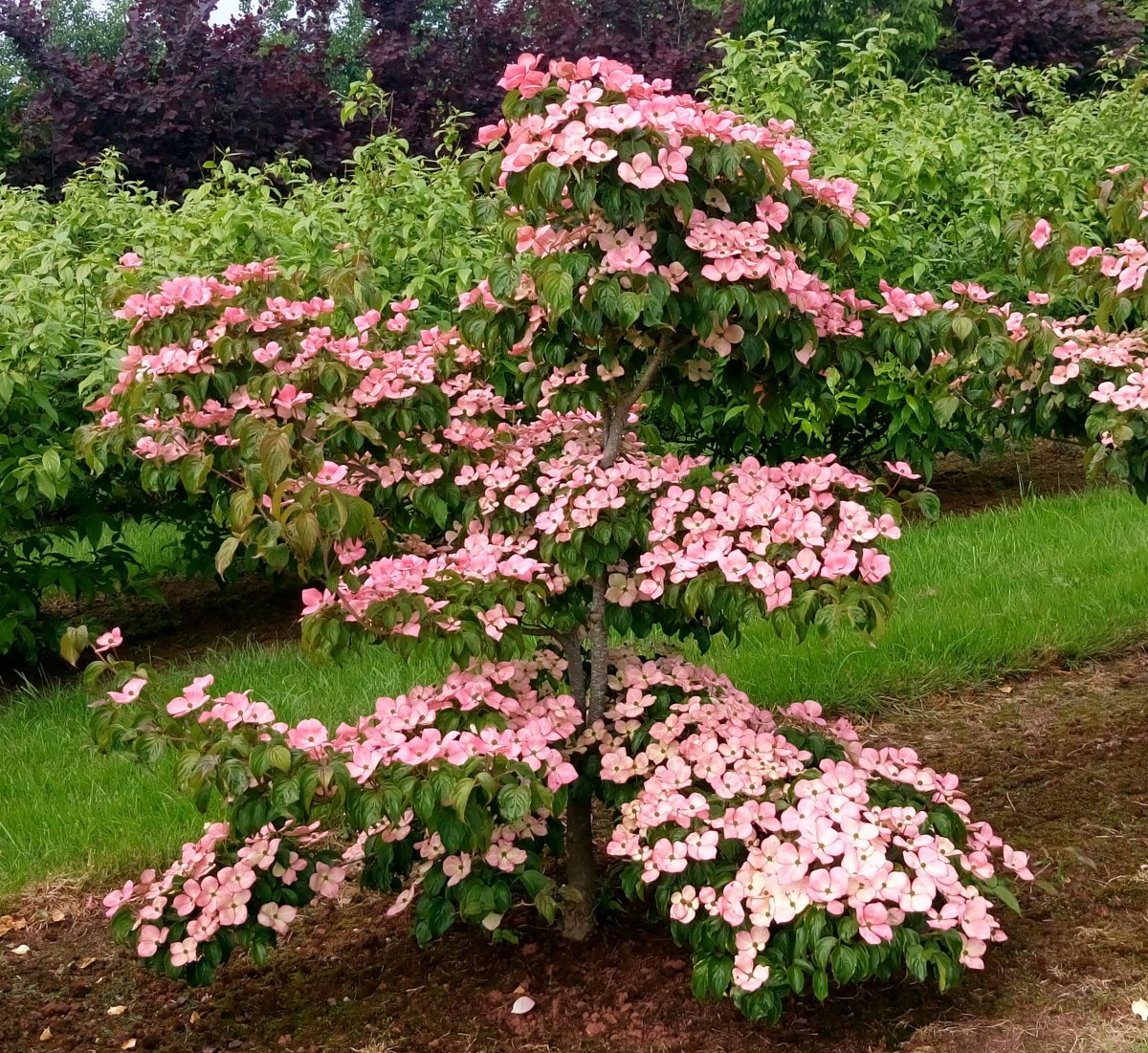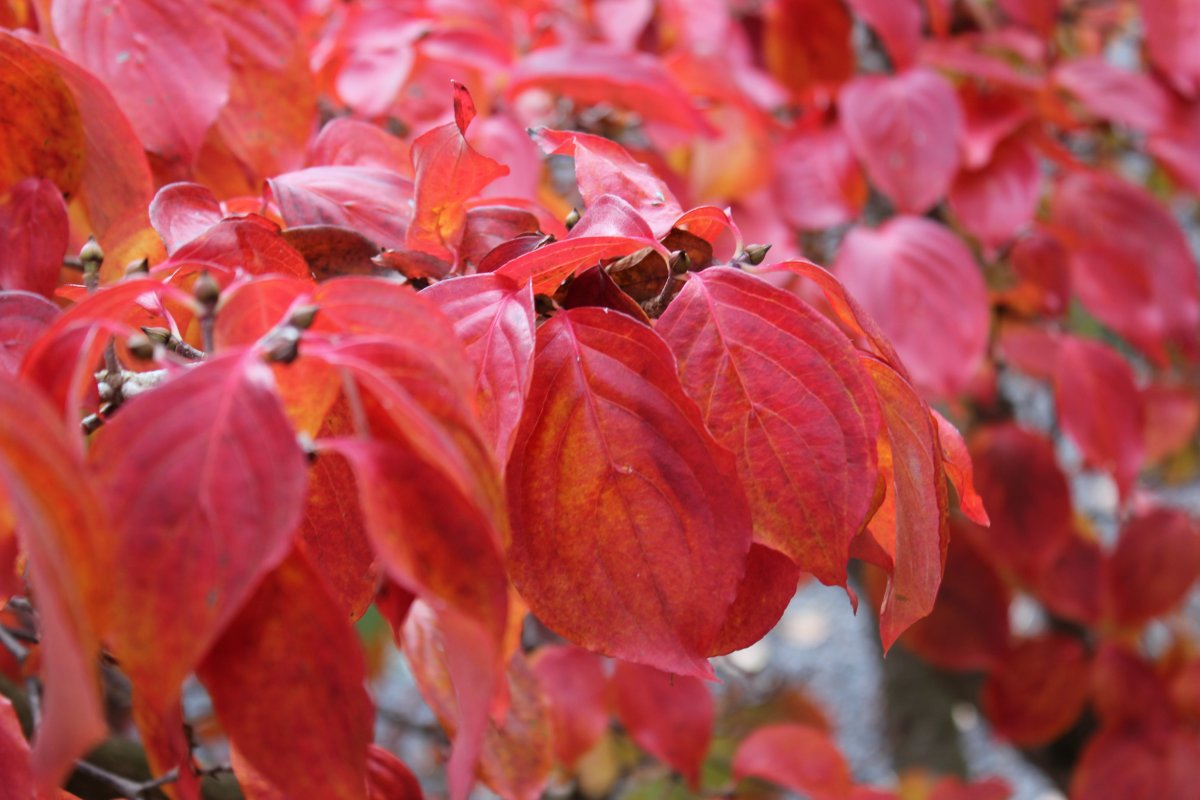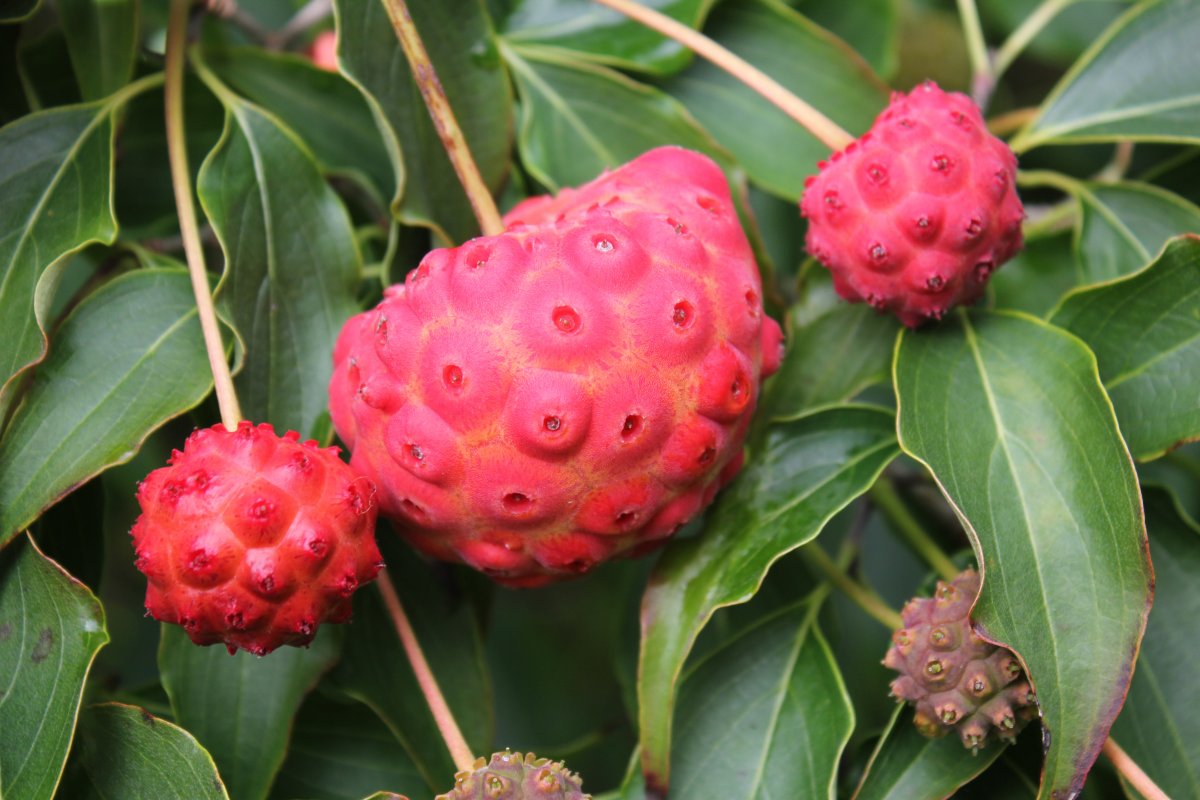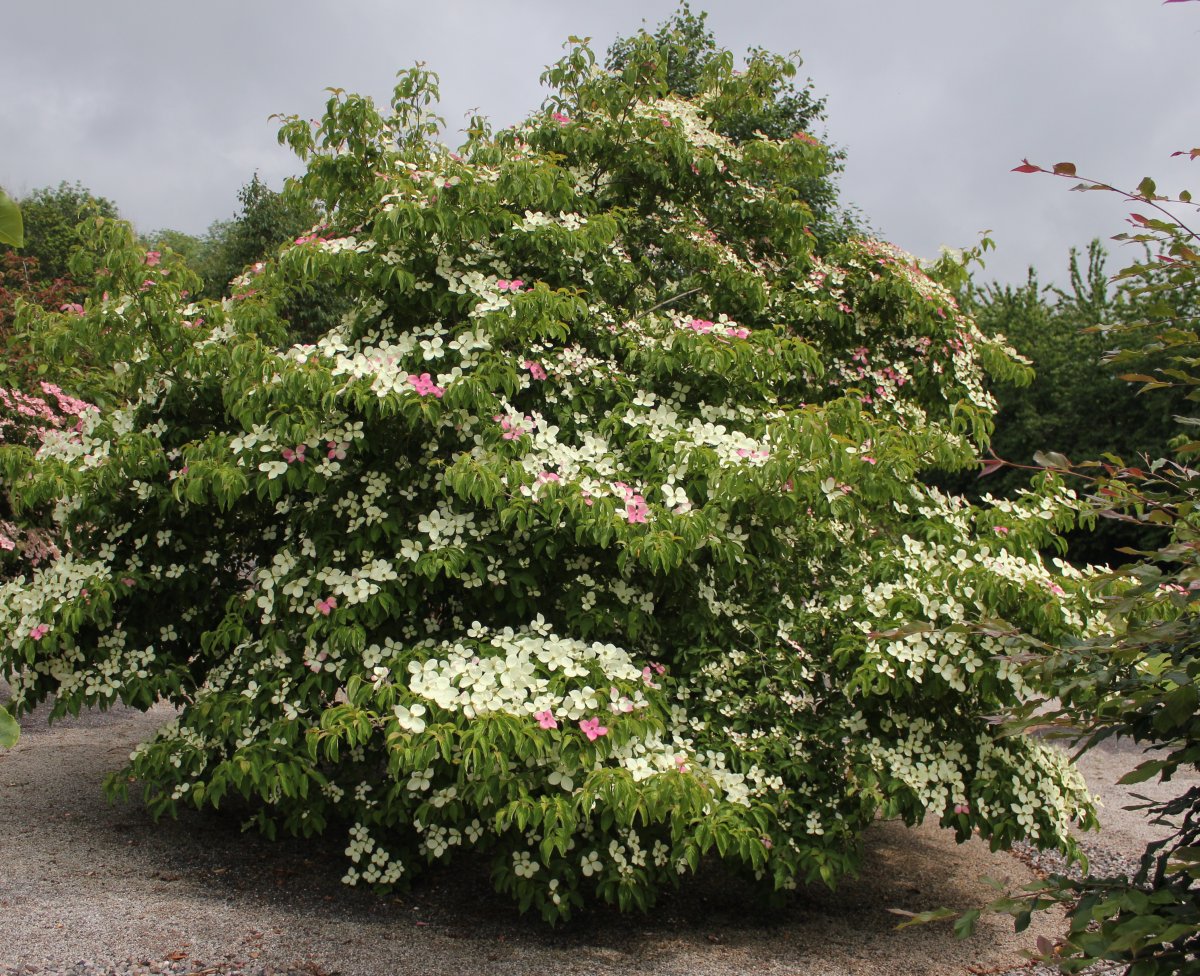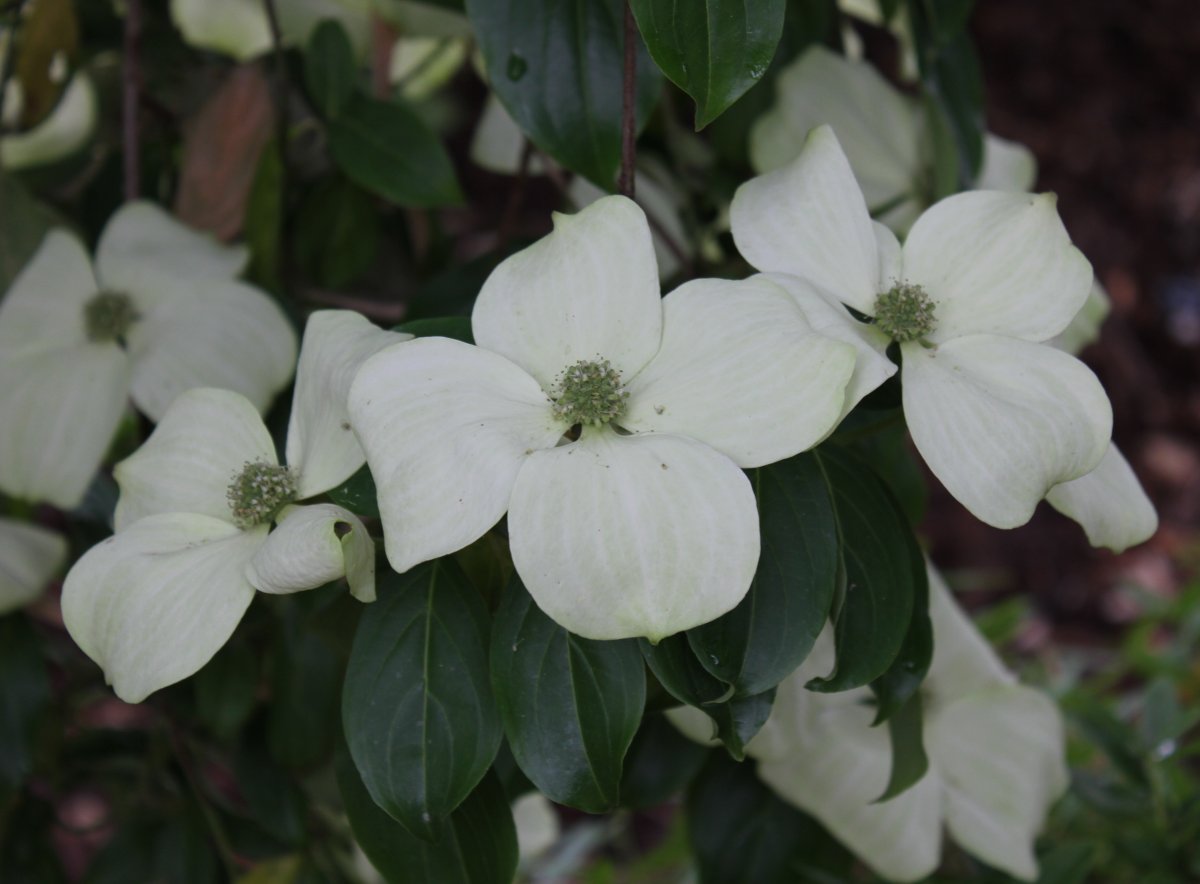|
Cornus
Cornus is a large and varied
genus. For the purposes of this website, they can be divided into 3
groups.
The flowering dogwoods are an attractive group of plants
that is not as widely known and planted in this country as they deserve
to be.
The attractive parts of the
flower head are bracts, which are actually modified leaves, but which
resemble petals. Four of these showy bracts surround the tiny true flowers in the centre. These
bracts are white in all the main species, but there are now many pink cultivars too.
Since they are bracts not flowers, they last longer; often starting
green and star-like before expanding to a more rounded shape as the true
flower opens. In some cultivars, the bracts then mature to pink;
particularly so on bracts that are more exposed. Thus it is less
evident on plants grown in a shady or woodland position. In an open,
sunny position a colour gradient can often be seen across the bracts
according to their exposure on the actual plant, with some cultivars
turning almost completely pink as the bracts mature.
Many cultivars of C. kousa
also produce
attractive fruit. These resemble big round strawberries and are indeed
edible. Although I'm not a particular fan, it's good to know that they
will do no harm to inquisitive fingers! I'm told that they make
excellent jam or even wine. And if that wasn't enough, many of them also
give lovely autumn foliage colour in shades of orange and red. The intensity of
colour may be defined by the weather and growing conditions, with some
cultivars colouring more reliably than others.
We are often asked just for the
straight species Cornus florida, C. kousa
or C. nuttallii as many people are unaware that there are so many
better selected forms. We do not grow the straight
species for several reasons. They would generally be grown from seed,
which naturally gives rise to variation. The plants can take a number of
years to flower and then prove to be inferior. Imagine the
disappointment!
By grafting, we can perpetuate a
particular feature; whether that's flower size, growth habit and size,
flower colour or foliage variegation. Over the years and around the
world, many forms have been selected for these various attributes and
named. Thus it is possible to plant something that you know will give
the shape, size and overall effect that you want, as well as already
being of flowering maturity. So much more satisfactory than leaving it
to chance.
Cornus nuttallii
as a species is rarely a happy plant in the somewhat damp
British climate and prone to sudden death when grown from seed. By
grafting it onto a more robust rootstock we can not only guarantee its
floral and other characteristics, but we can also make it easier to grow.
We graft all the selections of
these flowering dogwoods onto Cornus kousa, getting the young plants off to
the best possible start. It also ensures that the plants will flower
from a very early age.
In this manner, the plants are
tolerant of a surprisingly wide range of conditions. As with so many
plants, the ideal growing conditions would give adequate moisture when
the plant is in leaf and actively growing, yet drain adequately well in
winter when the plant is dormant and not able to use the extra water.
The nuttalliis and floridas especially have large leaves which can lose
water rapidly in the summer, so summer moisture is particularly
important for them. However, they can be vulnerable to fungal problems in winter,
so good air movement is valuable too. Interestingly, we have been told
of plants doing well on chalk too. Cornus are naturally shallow rooting,
so a good surface mulch in the spring can be very welcome in drier
sites. As with all mulching, do be careful to ensure that it is not
banked up against the base of the trunk. Many of this group of Cornus
are late into leaf in the spring, typically not leafing up before before May. This can be
useful in areas prone to late frost, but a little worrying if you're not
expecting it! Do not be tempted to water them to "help" them
into leaf, since this is the time when they are probably most vulnerable
to over-watering. Similarly it's important to be aware that the
foliage is often held in a manner where they seem to "hang"
from the twigs. This is entirely natural, and does not mean that they
are wilting.
The species mentioned above are
all deciduous, so loose their leaves in autumn. There are all also a
number of evergreen and semi-evergreen hybrids and selections of
flowering dogwood that hold their leaves long into the winter; a group
that we have significantly expanded in our collection in recent years.
Some of these are truly
evergreen, whilst others are better thought of as semi-evergreen because
they will eventually loose some or all of their leaves dependant on the
severity of the weather. As a group, these will grow happily enough in
even a very shady site, but often flower to their full potential with
more light. Most evergreens can be more vulnerable to severe winter
weather simply by virtue of having foliage at that stage. We are
extremely exposed here, so we have first hand experience of how well
they can tolerate frost and even high wind, the latter provided the
ground is not frozen solid for any length of time. It is difficult to
accurately classify many of these selections because of limited
information regarding their origins.
All in all therefore, these
really are fabulous plants for multi-season interest, with the variation
in all features between the cultivars enabling the perfect plant to be
selected for every occasion. Given that as a species Cornus kousa
is the best suited of the group for the British climate, it is the one
of which we have the most cultivars in the collection here. Indeed the range of options can seem
daunting, so feel free to email me with a list of your requirements and I
will recommend the best cultivar to suit you needs accordingly.
Below are some photos to
illustrate some of the diversity and features of this wonderful group.
|
